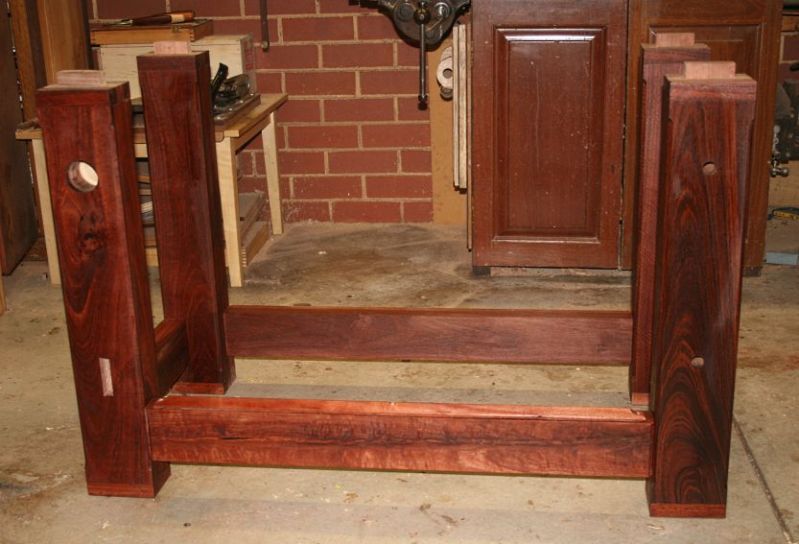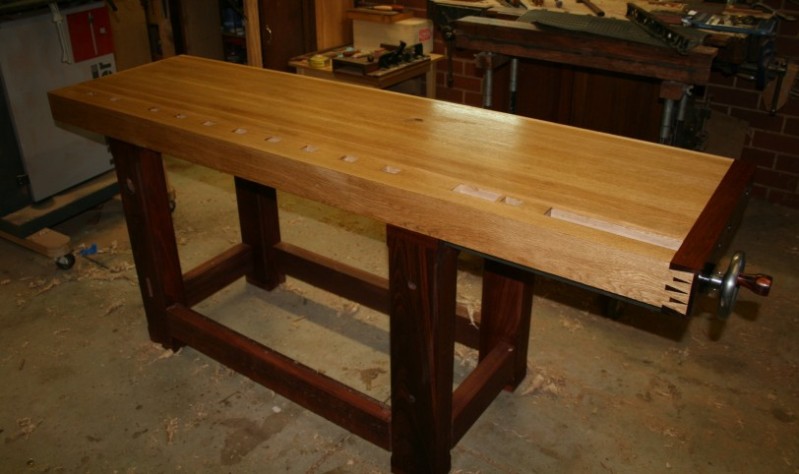I would not have a through mortice for a bench (as in the Chris Schwarz's version of a Roubo bench). This is subject to expansion and contraction, and what you see is the tenon either projecting through the top and needed to be trimmed, or the tenon contracting and leaving a hole that fills with sawdust.
My Roubo (built 6 years ago over 8 weekends) uses blind mortices. These are dry but pinned. The bench top is 3 1/2" thick and 22" wide x 78" long European Oak. It is bloody heavy and not going anywhere. The reason for pinning is simply to add a little insurance, but it is not needed. No glue because I want to be able to remove the top is we ever move. No drawbore since this would be difficult to undo. Pins (dowels) are safer.
A solid base is more important that through tenons. The tenons on my bench were going to be 2" in length, but in the end I reduced them to 1". This has been absolutely fine. The bench is rock solid, and I do a lot of hand planing on it.
The Jarrah base is also heavy and has 5" x 3 1/2" legs ...
Early photo of the bench top with blind mortices. Nice and clean! No tenon protrusions!
My recommendation is to rethink your mortice and tenon joinery. And, again, do not use the router for the tenon shoulders. Use the table saw to establish the shoulders.
Regards from Perth
Derek








 Reply With Quote
Reply With Quote


